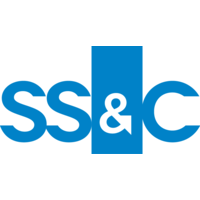In an FTF News Q&A, Stan Szczepanik and Scott Kurland at SS&C focus on how insurance investment managers can maximize portfolios amid major industry shifts.
 (FTF News recently got time with Stan Szczepanik, managing director and head of insurance solutions at SS&C Technologies, and Scott Kurland, managing director at SS&C, who took questions about key trends facing insurance company investment portfolios — complex portfolios, a growing convergence between private equity (PE) and insurance entities, and the ways that artificial intelligence (AI) technologies can ease the way forward. The Singularity offering from SS&C won the 2022 FTF Award for Best Middle-to-Back-Office Integration Solution.)
(FTF News recently got time with Stan Szczepanik, managing director and head of insurance solutions at SS&C Technologies, and Scott Kurland, managing director at SS&C, who took questions about key trends facing insurance company investment portfolios — complex portfolios, a growing convergence between private equity (PE) and insurance entities, and the ways that artificial intelligence (AI) technologies can ease the way forward. The Singularity offering from SS&C won the 2022 FTF Award for Best Middle-to-Back-Office Integration Solution.)
Q: Insurance company investment portfolios are becoming increasingly more complex and diversified as they act on mandates to increase allocations to alternatives and private equity deals. What are some of the top operational changes these firms will have to consider as they move away from more conservative strategies with incumbent systems?
A: Firms are in a never-ending quest for higher yield.
Over the past few years, we have seen insurance investment managers increase exposure to alternative investments through limited partnerships, joint venture vehicles, and private equity and credit transactions. This has been evident through their quarterly and annual National Association of Insurance Commissioners (NAIC) filings and associated Schedule B and BA reporting.
Unlike more traditional, exchange-traded equity and fixed income instruments, alternative investments and private credit transactions come with various operational nuances and challenges.
These include the ability to:
- Perform timely and accurate valuations, appraisals, or “mark-to-markets” on the investments;
- Collect, digitize and process capital and expense-related events on such investments from non-standardized documents, such as capital calls or distribution notices;
- Gain and maintain “look-through” transparency into the underlying holdings or physical assets within a given partnership entity for aggregate exposure or concentration tracking, and
- Understand and manage counterparty risk and the unique liquidity constraints or time horizons on such investments or credit transactions.

Scott Kurland
Traditionally, incumbent systems have not been well-equipped to ingest such data or documentation in an automated or scalable fashion. They may be unable to properly value or account for these investments. This, in turn, has made it increasingly challenging for insurance investment divisions to holistically manage risk and cash and perform asset and liability management (ALM) across their entire investment portfolio.
Q: There seems to be a growing convergence between private equity (PE) and insurance entities. What is driving this and what are some of the benefits from this convergence?
A: There has been an uptick in M&A activity over recent years, driving convergence between PE and insurance firms.
In 2021 alone, there were more than 14,000 unique private market transactions and over $1.2 trillion in new funds raised, and I believe the pooled internal rate of return (IRR) across PE was over 27 percent.
The marriage makes sense. On the insurance side — specifically life and annuity carriers — they have found a large capital surplus on their balance sheet along with a stable source and flow of capital from policy-holder premiums.
These carriers are looking for better ways to put that capital to work to generate higher returns. Still, they traditionally have not had access to a healthy pipeline of private market deals, nor do they have the in-house operational or investment expertise to identify, evaluate and manage such assets.
On the PE side, competition for deals has been heating up, but the cost of raising capital through traditional channels has also been growing more expensive. So, the PE firms see the stable source of permanent capital from insurance and reinsurance entities — typically having long-duration maturities/liabilities on the life side — as very attractive.
Therefore, a convergence of PE and insurance can bring together the best of both worlds — permanent capital and a healthy private market deal pipeline offering higher yield. The cost of servicing the liabilities is often low relative to the potential investment return from the portfolio of private market deals.
Q: What are some of the major implications of this convergence, and the critical operational and regulatory considerations?
A: There are undoubtedly significant implications of this convergence.
For one, PE firms entering the insurance or reinsurance business immediately become subject to various regulatory and reporting requirements such as NAIC quarterly and annual statutory reporting. Additionally, state-specific rules and guidelines may limit the scope of exposure or investment concentration in certain types of assets, thereby driving unique compliance monitoring and reporting.
From an operational perspective, insurance entities also require systems that can support multiple bases and methods of accounting, including U.S. GAAP [Generally Accepted Accounting Principles], STAT [Statutory Accounting Principles] and, depending upon the regions and jurisdictions they operate in, IFRS [International Financial Reporting Standards], Purchase GAAP, or others.
This, in turn, impacts how private market investments are valued, priced and reported. PE firms are not traditionally equipped with accounting systems to accommodate this.
There are also unique tax implications that may impact the book or market value of private market investments, which need to be tracked and accounted for correctly by the insurer upon the sale/disposal or transfer of assets within or between portfolios.
From a risk standpoint, the newly-combined businesses will require unique analytics and expertise to perform asset-liability management, forecast cash flows properly, and mitigate/manage risk across the entire public and private market investment portfolio.
Suppose these considerations are not addressed up front or are concurrent with the deal. In that case, any increase in investment return can quickly be eroded with higher operating expenses and increased credit or counterparty default rates.
At SS&C, we consciously decided to synthesize support for multi-basis accounting, operations, reporting and analytics across public and private investments on a single, modern, and flexible operating platform known as Singularity.
We have done this to support the requirements from both the PE and insurance sides without increasing operating costs or associated risk.

Stan Szczepanik
Q: What role can artificial intelligence (AI) technologies such as machine learning and natural language processing (NLP) can play in easing the challenges of convergence?
A: AI technologies such as machine learning, optical character recognition (OCR) and NLP can help bring increased scalability and operational efficiency to these deals, especially concerning the private market space, provided the models are trained properly and thoroughly.
For example, at SS&C, over the past few years, we have been training our AI models to read, parse, digitize, and process various types of event notices from partners and agent banks. At the end of each month, quarter or year, insurance companies can more rapidly account for these transactions, close their books, and file timely and accurate reports to the NAIC.
We are the largest fund administrator globally for alternative investments. We receive hundreds of thousands of these notices every quarter on behalf of our institutional clients, so we have benefited from an extensive set of data and documents to train our AI models.
We also have a global team of accountants with deep private market expertise to review/verify the results and provide haptic feedback to the models. This enables us to improve straight-through processing rates and data extraction accuracy continuously.
This operational model allows every new insurance or PE client we onboard to benefit from the aggregate training without having to start from scratch.
Need a Reprint?